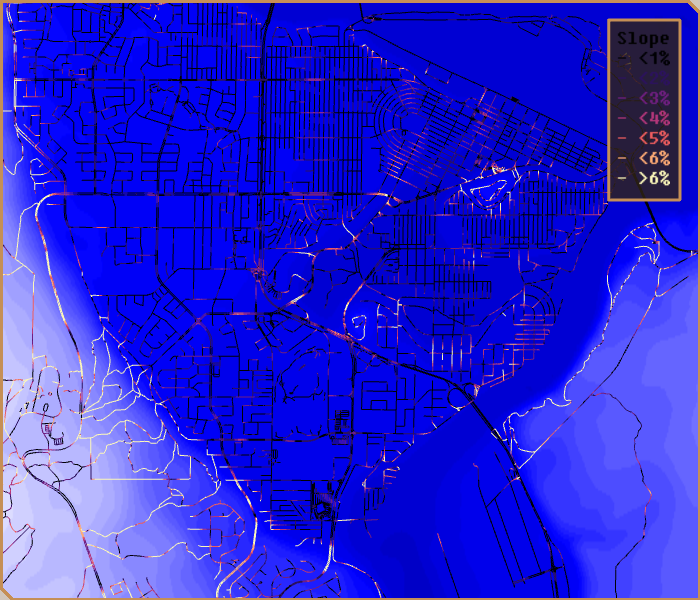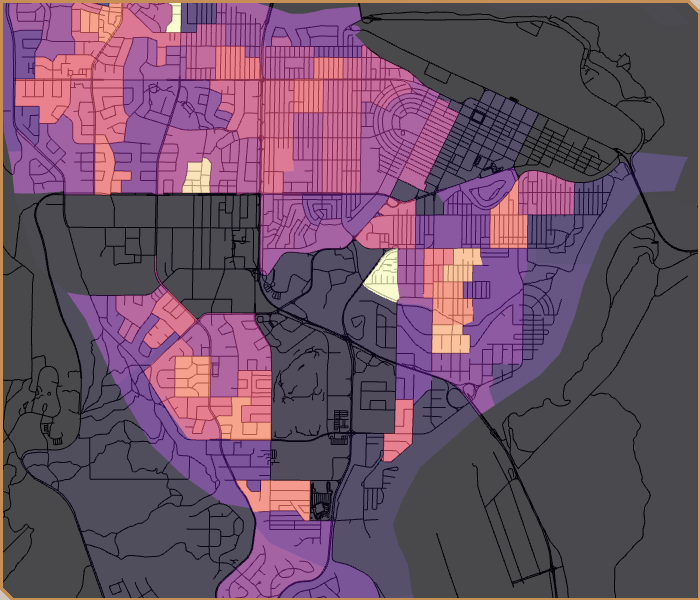Improving safe cycling in a city has great benefits in many areas:
"The world’s 280 million electric bikes and mopeds are cutting demand for oil far more than electric cars." [theconversation.com]
"Bike lanes and trails aren't just small, local projects; they're key components of a national effort to end climate change."
Our technology plans the locations of new bicycle tracks on the existing road and path network:
Bicycle tracks have a physical barrier (concrete blocks, bollards/pylons, etc.) protecting cyclists from motor traffic.
Our analysis and planning of the cycling network require a model for the behaviour of the typical cyclist:
Maximum speed: 18 km/h; maximum trip time: 30 minutes; minimum: 10 minutes.
A turn-key solution for biking network analysis and planning for your city.
Well-established rating system for biking safety on a road:
A function of road type, posted speed limit, on-street parking, number of lanes, cycling infrastructure.



Output of algorithm: where to place protected bike tracks.
[Y Shen] [M Goremyko, V Makarov, A Hramov, D Kirsanov, V Maksimenko, A Ivanov, A Yashkov, S Boccaletti] [P Crucitti, V Latora, S Porta] [S Lämmer, B Gehlsen, D Helbing] .
Second output of algorithm: tradeoff curve between making the most urgent infrastructure improvements and amount of biking trips improved.

Third output of algorithm: accessibility of neighbourhoods to workplaces (lighter colours represent better access).

BikeDNA: Bicycle Infrastructure Data & Network Assessment